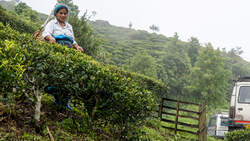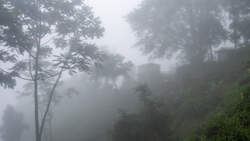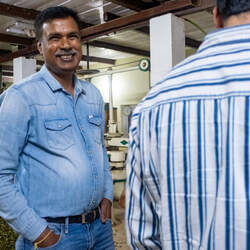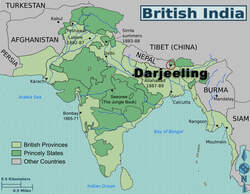Darjeeling Tea: The Champagne Of Teas - A Historical Journey
Nestled amid the towering Himalayas, Darjeeling stands tall not just because of its scenic grandeur but also its world-renowned tea.

Often referred to as the "Champagne of Teas", Darjeeling tea offers an aroma and flavor that's unparalleled. Let's delve deeper into the legacy of this esteemed beverage.
The British Introduction and the Birth of Darjeeling Tea
During the 19th century, the British Empire, driven by its growing appetite for Chinese tea, began to explore regions under their control to establish their own tea plantations.
This pursuit brought them to the serene slopes of Darjeeling, a region previously unmarked by commercial tea cultivation. With its high altitudes, abundant rainfall, and embracing mists, Darjeeling presented the ideal conditions for tea cultivation. However, introducing these plantations meant impacting the lands and lives of the indigenous communities that had resided there for generations.
Darjeeling, at its core, is a melting pot of several indigenous communities. Among the most prominent is the Lepchas, often considered the region's original inhabitants. Traditionally, they led a semi-nomadic life, deeply connected to the forests and rivers. The Bhutias, originally from Tibet, settled in Darjeeling long before the British arrived, bringing with them their rich Tibetan culture. The Gorkhas, comprising various ethnic sub-groups from nearby Nepal, also played a significant role in shaping the region’s cultural and social fabric.
Drawing from the expertise of Chinese tea cultivators and with seeds sourced from China, by the mid-1850s, Darjeeling saw the emergence of its first commercial tea gardens. While this brought economic opportunities, it also significantly altered the traditional ways of life of the Lepchas, Bhutias, and Gorkhas, intertwining their destinies with the legacy of tea.


The Distinctive Character of Darjeeling: Terroir and Flavor
Terroir, a French term, refers to the unique combination of factors, including soil, climate, and sunlight, that gives wine, coffee, and tea its unique taste and flavor. Darjeeling's terroir is truly unparalleled, giving the tea its distinctive characteristics.
The rich mineral content of the soil, combined with the specific climate, results in a tea that can offer a multitude of flavors in a single sip. Depending on the harvest time, Darjeeling tea can exhibit notes ranging from floral and fruity to those reminiscent of nuts or wood. The four primary harvest times, known as flushes, each bring forth teas with their unique aromatic profiles.
The Flushes of Darjeeling: Seasons in a Cup
In the realm of Darjeeling tea, the term 'flush' refers to the seasonal harvests that occur throughout the year. Each flush reflects a particular season and brings forth tea with its own distinctive aroma, flavor, and character. Understanding these flushes is essential to appreciate the multifaceted nature of Darjeeling tea.
First Flush (Spring Tea):
-
Time: Late February to April
-
Character: The first flush is eagerly awaited by tea enthusiasts. After the dormant winter months, the tea bushes sprout tender, light-green leaves. This flush produces a light, clear cup with a bright liquor. The flavor is fresh, brisk, and slightly astringent, often reminiscent of flowers and fresh greens.
-
Cultivation: This flush is all about timing. The young leaves and buds are plucked just at the right moment to ensure they retain their delicate flavors. Minimal processing helps preserve the freshness.
Second Flush (Summer Tea):
-
Time: May to June
-
Character: Often considered the pride of Darjeeling, the second flush yields a fuller-bodied tea with a distinct muscatel flavor, which is a sweet, grape-like taste. The liquor is a rich amber, and the aroma can remind one of fruits and nuts.
-
Cultivation: As the summer sun intensifies, the leaves grow richer in flavor. Expert pluckers select the leaves that have just the right balance of maturity, ensuring the signature muscatel flavor is pronounced.
Monsoon Flush (Rainy Tea):
-
Time: July to September
-
Character: The monsoon flush produces a robust and bold tea, with a darker, cloudy liquor. It lacks the delicate nuances of the earlier flushes but is favored for its stronger flavors, making it suitable for masala chai or milk-based preparations.
-
Cultivation: The abundant monsoon rains cause the tea leaves to grow faster. This rapid growth results in larger leaves with a more pronounced flavor, which is then captured through careful processing.
Autumn Flush (Autumnal Tea):
-
Time: October to November
-
Character: The autumn flush is a treat with its coppery-red liquor and a delightful aroma that evokes the warmth of the season. The flavor is full-bodied, mellow, and slightly fruity, capturing the essence of the transitioning season.
-
Cultivation: As Darjeeling prepares for winter, the slowing growth rate of tea leaves allows for a concentration of flavors. Plucking during this period is more spaced out, giving the leaves ample time to develop their unique character.
Understanding the flushes of Darjeeling offers an insight into the rhythm of nature and the expertise of tea cultivators, who work in harmony to bring forth teas that encapsulate the spirit of each season.
Tea Estates of Darjeeling: A Legacy of Cultivation and Transition
The tea estates, often referred to as 'tea gardens,' form the backbone of Darjeeling's illustrious tea legacy. These vast expanses of carefully manicured tea bushes, spread over rolling hills, are not just places of cultivation but hold stories of evolution, resilience, and transition.
Origins and Development:
Introduced during the British colonial period, the establishment of tea estates marked a significant transformation in the landscape and socio-economic fabric of Darjeeling. These estates were initially managed by the British and relied heavily on labor brought in from neighboring regions, particularly Nepal. The workers, under the system, lived on the estate lands in accommodations provided by the estate management, creating closely-knit communities bound by their shared work and life.
Impact of Indian Independence:
The dawn of Indian independence in 1947 brought with it significant changes for the Darjeeling tea estates. As India sought to redefine and reclaim its identity post-colonialism, the tea gardens became a focal point of transition.
-
Ownership Transitions: Many of the British owners and managers of tea estates left the country, leading to a shift in ownership. These estates were then taken over by Indian entrepreneurs and business conglomerates, leading to a new era of management and cultivation practices.
-
Labor Rights and Welfare: With the Indian government focusing on workers' rights and welfare, significant reforms were introduced to improve the living conditions and wages of the tea garden workers. The Plantations Labor Act of 1951 was a landmark in ensuring better work conditions, medical facilities, and housing for the workers.
Giddapahar Tea Estate
Literally, it means "Eagle’s hill" but is often thought of as "Eagle’s Cliff". Giddapahar is owned and operated by two brothers who live on the estate.

The owner and tea manager of Giddapahar Estate

Some of the workers at Giddapahar wanted to show Shawn how to wear the basket.
Glenburn Tea Estate
Overlooking the mighty Kanchenjunga, this estate carries a history that dates back to 1859, when Scottish visionaries and the pioneering Prakash family, affectionately known as the "Chaiwala family", gave life to this paradise.
This video of the Glenburn Tea Estate shows the Hotel side and a walk in the tea garden on a rainy morning in July.
Earning Global Acclaim:
As the 20th century progressed, the distinct flavor of Darjeeling tea, a product of this rich cultural amalgamation, began to capture global attention. Its unique taste, a marriage of varied cultural tea practices, was unparalleled. This drew connoisseurs from around the world, seeking to experience the golden brew that held stories of the Himalayan foothills and its people. Soon, Darjeeling tea wasn’t just a local treasure; it was a global sensation, marking its place in tea ceremonies and luxury lounges across continents.
Contemporary Darjeeling: Triumphs and Challenges
The early 21st century saw Darjeeling tea achieving the Geographical Indication (GI) status. This implied that only tea cultivated in this specific region could be labeled "Darjeeling". It was a significant move to protect the identity and authenticity of this tea from being replicated or counterfeited.
However, with the fame came challenges. Over the years, the region has witnessed multiple strikes, largely driven by wage disputes and the demand for better working conditions for the laborers who toil day in and day out. The complexities of running a tea garden, which involves careful selection of leaves, expert processing, and constant monitoring of the health of the tea bushes, demands a workforce that's skilled and content.
Darjeeling tea is infused with history, nature, and culture. Every cup tells a story of the Himalayan mists, the hands that nurtured and plucked the leaves, and the journey it undertook to reach our cups. At the New Mexico Tea Company, we respect and cherish this legacy. Through our curated collection, we invite you to partake in this rich narrative and savor the exquisite experience that is Darjeeling tea.


